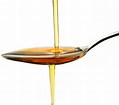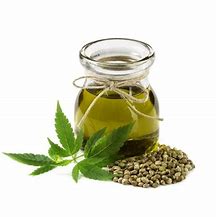Sisymbrium OIl - Sisymbrium irio








Sisymbrium OIl - Sisymbrium ir
Latin Name: Sisymbrium irio
Family: Cruciferae
The Plant and its environment: This is a herbaceous plant found in certain regions of Asia.
The Oil: The oil is a clean yellow-green- colour with a distinctive odour and taste.
Methods of extraction: Sisymbrium oil is obtained from the seeds of the plant by cold pressing.
Principal Constituents
| Type | Based On | Content - % |
| Monounsaturated fatty acids | ||
| C16:0 | palmitic acid | 5.9 |
| C18:0 | stearic acid | 1.9 |
| C20:0 | arachidic acid | 1.7 |
| C22:0 | behenic acid | 9.5 |
| C24:0 | lignoceric acid | 0.9 |
| Typical saturated fatty acid content | 20 | |
| C16:1 | palmitoleic acid | 0.2 |
| C18:1 | oleic acid | 12.1 |
| C20:1 | ecosenoic acid | 9.2 |
| C22:1 | erucic acid | 0.2 |
| Typical monounsaturated fatty acid content | 22 | |
| Polyunsaturated fatty acids | ||
| C18:2 | linoleic acid | 16.6 |
| C18:3 omega 6 | alpha linoleic acid | 0.6 |
| C18:3 omega 3 | gamma linoleic acid | 36.8 |
| C22 others | 0.9 | |
| Typical polyunsaturated fatty content | 55 |
The almost negligible level of erucic acid (C22:1) ia atypical, considering that Sisymbrium belongs to the family Cruciferae.
Physical Properties
| Specific gravity at 20% | 0.913 |
| Refractive index | 1.465-1.470 |
| Saponification value | 160-180 |
| Iodine value | 96-103 |
Folk-lore and traditional plant remedies
As early as Roman times sisymbrium oil was used as a massage oil for the body. Today, in certain regions of India, sisymbrium seeds are brewed to treat skin ailments. It is interesting to note that around the regions of Hyderabad and Lahore, not from Kashmir, the seeds of Sisymbrium irio are applied to the face for between 15 and 20 minutes. This is reputed to give excellent results in improving the texture and appearane of the skin
Cosmetic Use
An oil with good cosmetic properties
Reference: Carrier Oils For Aromatherapy and Massage: Len Price with Ian Smith & Shirley Price
Articles-Most Read
- Home
- Contact Us
- Coconut Oil-2
- Absorption Ratings for Carrier Oils
- Cold Pressing Method
- What are Essential Fatty Acids
- Cherry Kernel Oil
- Fixed Oils and Skin Penetration
- Hempseed Oil
- Almond Oil
- Cocoa butter
- Camelina Oil
- Antibacterial Effects Of Carrier Oil
- Coconut Oil
- Lime Blossom Oil (macerated)
- Carrot Oil, Wild Carrot Oil (macerated)
- Apricot Kernel Oil
- Kukui Nut Oil
- Jojoba Wax
- Pumkin Seed Oil - Cucurbita maxima, C. pepo
- Passion Flower OIl (Macerated)
- Hydrocotyle Oil (macerated)
- Palm Kernel Oil
- Rapeseed Oil - Carrier Oil
- Nutrients
Who's On Line
We have 9 guests and no members online
Articles-Latest
- How to Make Homemade Olive Oil: A Step-by-Step Guide
- 20 Evidence-Based Aloe Vera Oil Benefits For Skin, Hair & Health
- Peanut oil - Cold pressed - Are There Health Benefits? How To Make
- What Are the Health Benefits of Black Seed Oil?
- Comfrey oil Infused
- Chamomile Flowers Infused Oil
- Calendula Flowers Infused Oil
- Arnica Flowers Infused Oil
- How To Make Herb-Infused Oils
- DIY avocado oil for healthy skin
- How To Make Coconut Oil
- 8 Benefits of Mustard Oil, Plus How to Use It
- SHOREA STENOPTERA SEED BUTTER
- Shea Butter- 7 Amazing Benefits Of Shea Butter
- Monoi Oil For Hair & Skin
- Mango Seed Oil
- Cohune Oil Is The Next Big Thing
- Brazil Nut OIl
- 7 Impressive Benefits Of Allspice
- Camelina Oil Benefits, Uses, and Side Effects




